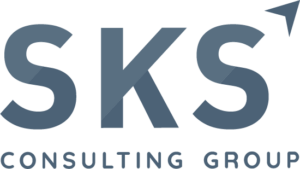Written by: Dr. Nate Whittier, SKS Partner
Leadership development plans are an important part of an executive’s learning and development efforts, often serving as the blueprint for moving from insight to action with the goal of enhancing one’s leadership skills, impact, and performance. If you’ve ever created a leadership development plan, for yourself or others, you have likely sought to identify activities (e.g., conferences, stretch assignments, job rotations, etc.) that provide skills training or practice around an area of needed development (e.g., delegation, strategic thinking, executive presence, etc.). The emphasis we place on identifying specific behaviors or actions makes good sense given that we are, in fact, often looking to increase or decrease specific behaviors that help the leader, and the business, attain success. At SKS, we asked ourselves what more could be done to move the needle in a faster, more sustainable way given what we know about behavior change, which led to the creation of The SKS Leadership Development Model.
Those who study human behavior have consistently found that thoughts and feelings shape our behaviors. In our work at SKS, we believe that leaders can achieve sustained, long-lasting behavior change by examining and adjusting their cognitive mindset, emotional experience, and behavioral practices. The three elements interact in a powerful way and each one can have influence over the others. Your thinking influences how you feel, and how you feel impacts how you react and respond to the world around you. There is a constant feedback loop between how you perceive things, the gut reactions you have, and the behaviors you engage in. For example, if you have a mindset that you are not as skilled as others, you might think you need to prove yourself to people. If you feel like you need to make your strengths and achievements known, you might behave in ways that are self-promoting. These behaviors can have a positive or negative impact on not only your ability to meet your goals, but also succeed as a leader in your organization.
Below is a deeper dive into each of the three components of the SKS Leadership Development Model:
Mindset
Your mindset is the way you think. It is the lens you view the world through. When you think about your development goals, it is helpful to examine the ways in which your thinking influences you, positively or negatively. Your challenge is to get clear on the aspects of your mindset that have contributed to your goals, as well as how you can think differently in order to achieve them.
Experience
Your experience is the way you feel. Your feelings and emotions are influenced by your thoughts, and they also provide you with important information about how you are responding to events around you. Your objective is to bring awareness to the emotions that have contributed to your development goals and challenge yourself to create an emotional experience that is more conducive to achieving your objectives.
Practices
Your practices are your behaviors and the things you do. This component challenges you to take your understanding of the factors that drive your impact in your work environment and clearly identify the actions that you can engage in that are most likely to help you reach your development goals.
Stretching yourself to explore new ways of thinking, finding new ways of managing emotions, and displaying new ways of showing up can be powerful in supporting growth, achieving your development goals, and changing for the better as a leader. This is particularly true in times of rapid change, uncertainty, and volatility. I’m sure we all have experienced situations where our existing behaviors are no longer effective or serving us well. For example, a director level individual being promoted to the executive leadership team will undoubtedly need to start, stop, or continue certain behaviors in order to perform effectively in their new capacity. How enduring or sustainable are these changes likely to be, however, if there is not a corresponding change in the way the new executive thinks about their role or how they feel about their performance. It’s all too common for recently promoted individuals to dig back into their old work because it contributes to feelings of mastery or accomplishment, whereas the new responsibilities can lead to feelings of inadequacy, frustration, defeat, etc. Being proactive in your development is key. Whether you’re in a new role or in an existing role, spend time reflecting on What you think of the goals you’ve set (MINDSET), What you feel about those goals (EXPERIENCE), and What you will do to achieve your goals (PRACTICES). This exercise may just help you exceed your expectations.
If you’d like to learn more about the SKS Leadership Development Model or how to put it into practice, please reach out, we’d be thrilled to chat.


